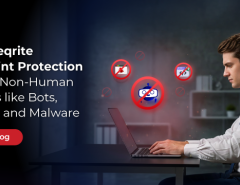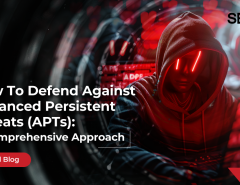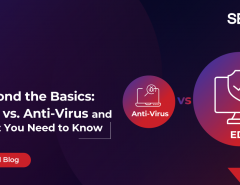Globally, as enterprises gather and integrate optimum avenues to secure their information technology infrastructure from cyber threats, somehow, hackers are still managing to find a way to break-in. Cybersecurity vigilance has driven business stakeholders to secure core networks with the latest and best-in-breed anti-virus and malware detection capabilities. Since this initiative, hackers are now changing routes to trespass, penetrate and annihilate businesses – one such channel being content collaboration platforms (CCPs).
Today’s corporations are heavily dependent on CCPs coming from popular brands like Box, Dropbox, Google, etc. to gratify a variety of enterprise needs. But before we discuss what these needs are, here is a glance at important statistics on CCPs.
- About 33% of Millenials prefer to work in companies that promote collaborative workspaces
- Nearly 83% of the workforce globally is dependent on technology to collaborate
- Roughly 85% of employees that leverage on collaborative management tools perceive themselves as happy at their workplace
- The content collaboration market will be around a US$ 45 billion industry by the end of 2019
The numbers provide satisfactory evidence about the success and adoption of CCPs in the enterprise. However, why did they become so popular with the corporate workforce?
Effective Communication
CCPs have facilitated a channel for internal customers to easily share their ideas with colleagues. This location-agnostic development is helping enterprise workforce to be in-sync about a plethora of business elements, globally. Before CCPs emails were the go-to source for internal communication, however, it didn’t turn out that well because of factors such as loss of documents, excessive to-and-fro, decentralization, etc.
Improved Project Management
Enterprises have hundreds of projects-in-process at any given point in time. Managing one or two projects is easy, but to manage a large number of projects simultaneously is not an easy task. Furthermore, when the task force chosen to execute projects is spread out globally, project management software becomes a must.
Strengthening the Workflow of Teams That Function on the Agile Model
The use of CCPs has drastically optimized the performance of Agile teams facilitating better remote working possibilities, improved scheduling, and quick talent identification.
Increasing the Speed of Work
CCPs are helping in saving a lot of time for teams which in-turn permits them to focus on other important things, increasing the speed of work, consistency, and performance.
Employee Satisfaction
We live in a surging trend of remote working in today’s day. Employees have time and again chosen remote working as a preferred choice over working from an office location. Managing remote employees was a daunting challenge, now resolved due to effective CCPs. Enterprises are seeing a spike in their approval ratings through employee satisfaction surveys, courtesy CCPs.
With such a strong employee sentiment towards CCPs, they are here to stay and grow year-after-year. This brings us to an important point about the possible ways in which CCPs can become a soft target for malware attacks.
CCPs are an ideal target to execute the dreaded ‘cyber kill chain.’ With hundreds of users leveraging collaboration platforms, all hackers need is that one user for spreading a harmful malware in enterprise systems – they can easily do so through phishing techniques such as social engineering with nothing to stop them.
Some of the best-guarded companies in the world also have an IT policy that suggests that users need to practice safety while dealing with enterprise data. Unfortunately, this not always the case. Employees are bound to make mistakes even if made unintentionally. The result – employees end up clicking on that one infected file that can disable the entire enterprise.
CCPs (unlike emails) are not under the control of an organization’s IT department. History is full of examples wherein files coming from emails were responsible to crash entire networks. So, if a channel as well-guarded as company email can get infected, CCPs become extremely soft targets for hackers to spread malware. Moreover, malware coming into an enterprise through CCPs can further cripple IT systems.
Typically, what hackers are doing is attempting to gain access to an employee’s home computer. Currently, social engineering messages act as bait for employees to click on malicious files. These files enter from the home computer into the enterprise network and move into a cloud-hosted collaboration platform. Once, even a single file gets contaminated, employees interacting with these files transform into carriers of malware that may cripple the entire enterprise. What’s worst is that such attacks may take days to be identified.
An add-on to this problem is how employees use CCPs to share files. In the event of a breach, documents that are being shared either internally or externally containing highly-sensitive business data can be viewed by a hacker with the simplest of web tools. This also applies to user workflows of attaching weak passwords to business applications. Businesses all over the world need to make rigid policies around employee workflows. If not, cybercriminals all over the world will continue to breach enterprises and gain access to highly-sensitive data.
Companies that provide CCPs themselves claim that the only line of defense that they employ to counter cyberattacks are anti-viruses and that’s not enough. What companies need to do is integrate enterprise-grade cyber defense solutions like Seqrite Endpoint Security (EPS) for comprehensive security across various endpoints.
Some good-to-follow tips for enterprises dealing with CCPs in general include –
- Uploading a file in the company server instead of CCP for a more advanced scan
- Ensuring that the file is checked automatically every time an employee saves a change on it
- Allowing IT departments to reclaim ownership on enterprise data




